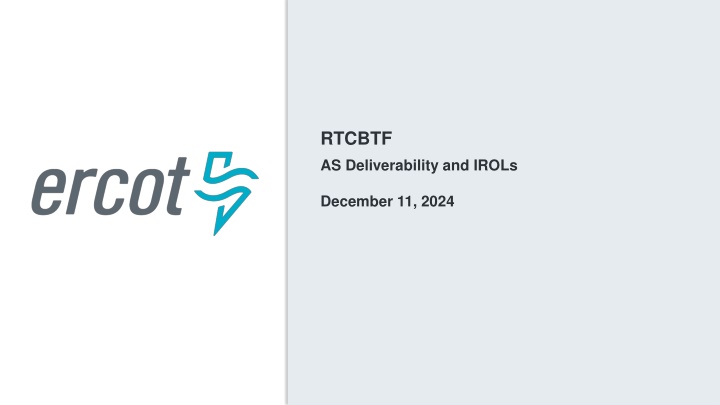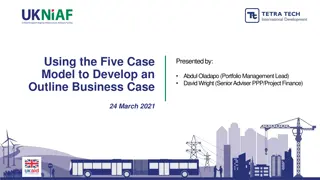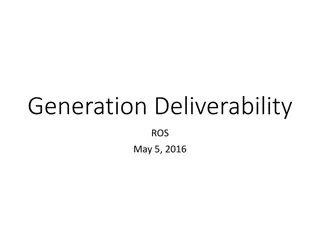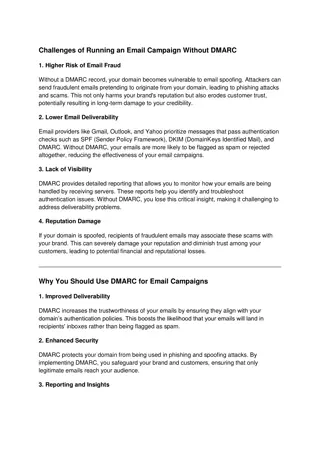
Ancillary Services and IROLs in Energy Market Design
Explore the interconnection between Ancillary Services and Interconnection Reliability Operating Limits (IROLs) in the energy market design. Learn how Ancillary Services deployments can impact IROL exceedances and discover operational procedures to prevent potential issues. Stay informed about the implications of Ancillary Services on energy system reliability and stability.
Download Presentation

Please find below an Image/Link to download the presentation.
The content on the website is provided AS IS for your information and personal use only. It may not be sold, licensed, or shared on other websites without obtaining consent from the author. If you encounter any issues during the download, it is possible that the publisher has removed the file from their server.
You are allowed to download the files provided on this website for personal or commercial use, subject to the condition that they are used lawfully. All files are the property of their respective owners.
The content on the website is provided AS IS for your information and personal use only. It may not be sold, licensed, or shared on other websites without obtaining consent from the author.
E N D
Presentation Transcript
RTCBTF AS Deliverability and IROLs December 11, 2024
Undeliverable Ancillary Services - Review Ancillary Service (AS) Deliverability Risk in the Current Market Design The Day-Ahead Market co-optimizes Energy and AS obligations If an AS is considered undeliverable in Real-Time, the ERCOT Control Room can move the obligation from one Resource to another within a common QSE AS deliverability risk in original RTC design Discussions in 2019-2020 led to agreement of rules and software that would allow an ERCOT operator to manually limit the amount of Ancillary Services being awarded to an individual Resource Congestion Impacts of AS deployments Brief Frequency Response In a frequency event, Ancillary Service deployment is automatic and system-wide as Resources increase output to recover frequency (where Resources on both sides of constraint respond and may provide counter-flow). If constraints are briefly stressed, Real-Time Market dispatch redistributes energy within constraint limits within minutes. Longer Running Services By design the Real-Time Market deploys certain longer-running Ancillary Services by converting the capacity in energy. As the market optimization is designed to also manage congestion, that capacity will not be deployed in such a way that it would exacerbate congestion unless it needed to prioritize serving energy over managing the constraint. 2 PUBLIC
Ancillary Services and IROLs Interconnection Reliability Operating Limit (IROL) A System Operating Limit that, if violated, could lead to instability, uncontrolled separation, or Cascading Outages that adversely impact the reliability of the Bulk Electric System 9 IROLs STEX: E_PASP, E_PATA, I_PASP, I_KALO PNHNDL N_TO_H MCCAMY WESTEX VALIMP How could Ancillary Services(AS) deployments lead to an IROL Exceedance? When Resources carrying Ancillary Services on the hurting side of an IROL If Regulation up is deployed, these MWs could push the IROL flow beyond the IROL limit SCED is unaware of these deployments If RRS, ECRS or Non-Spin AS MWs are released to SCED, these MW could be undeliverable if converting this capacity to energy would violate the IROL limit subject to IROL constraint Max Shadow price 3 PUBLIC
How to prevent a potential IROL exceedance Operational Procedure Proposal Restrict Ancillary Services on hurting Resources when an IROL is active in SCED and the IROL flow is greater than X% of the limit. Ancillary Service restrictions would include Regulation Up, RRS up, Non-Spin, ECRS Restrictions would apply to Resources with a hurting/positive shift factor greater than Y% This process would be operator triggered in the EMS Transmission Constraint Manager No change to governor response requirements Retain the ability to apply logic to other non-IROL GTCs, if needed. This process will be captured in the ERCOT Resource Desk Operating Procedure when updated for RTC+B 4 PUBLIC












